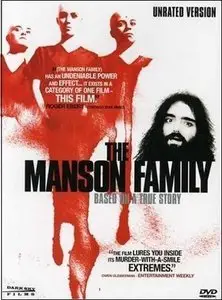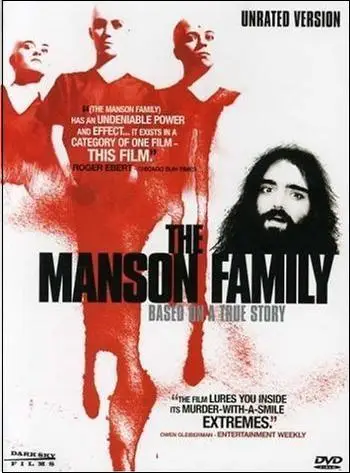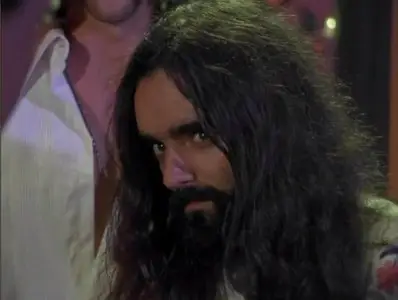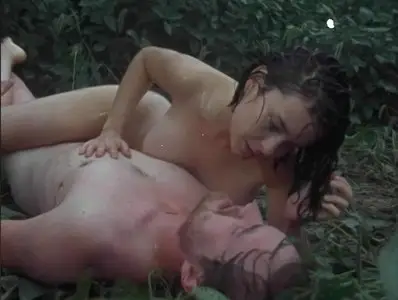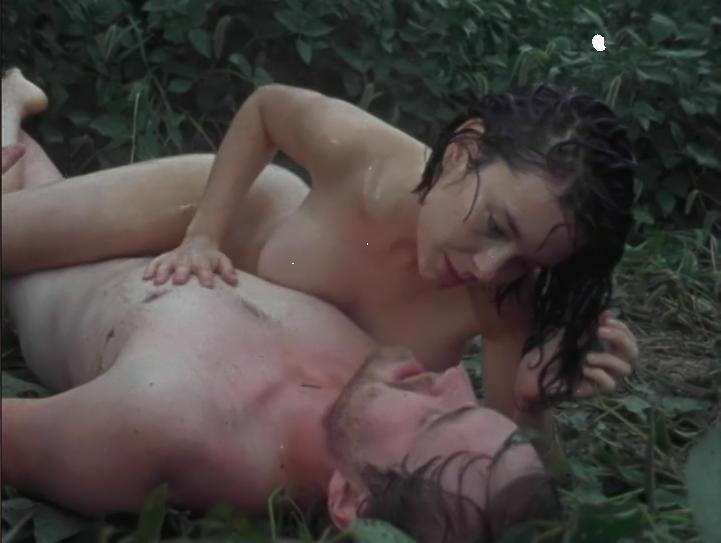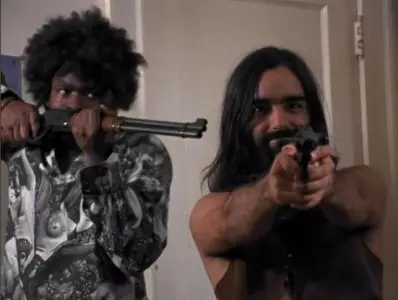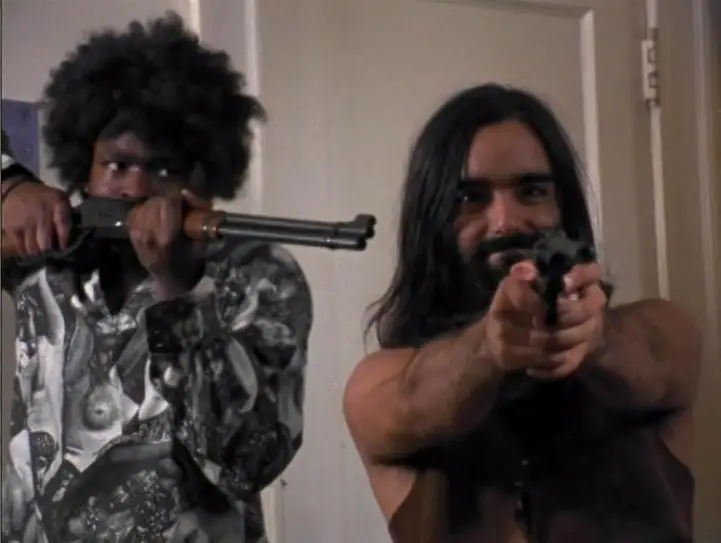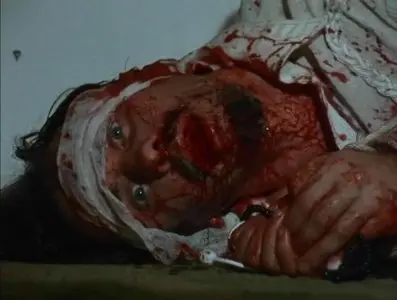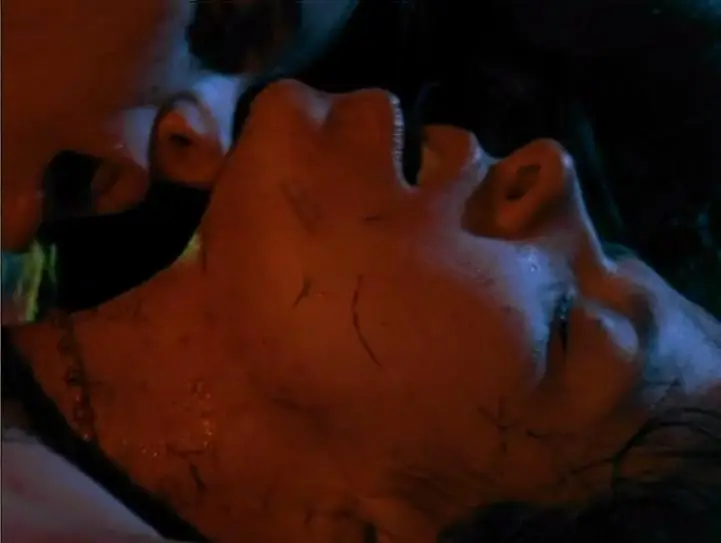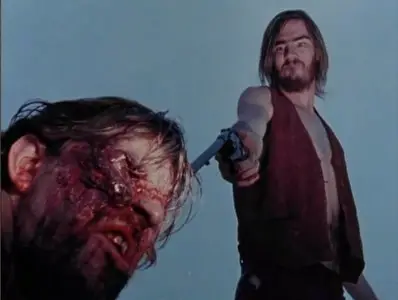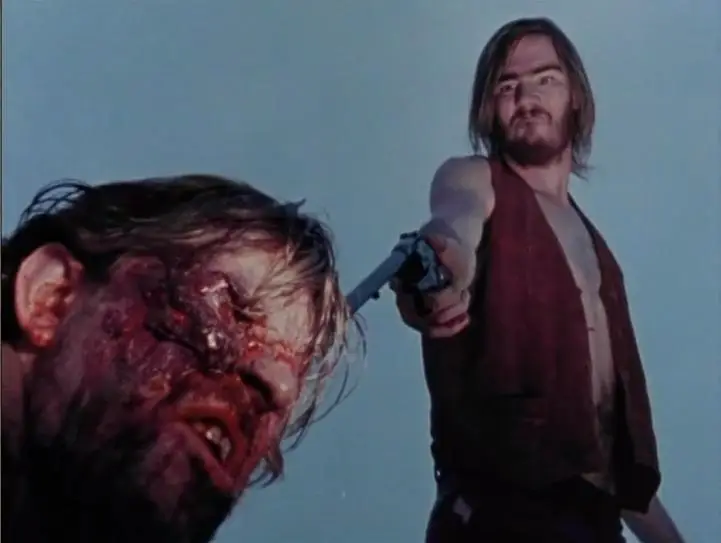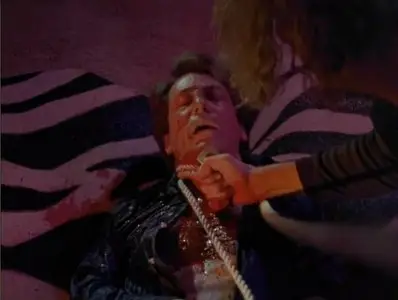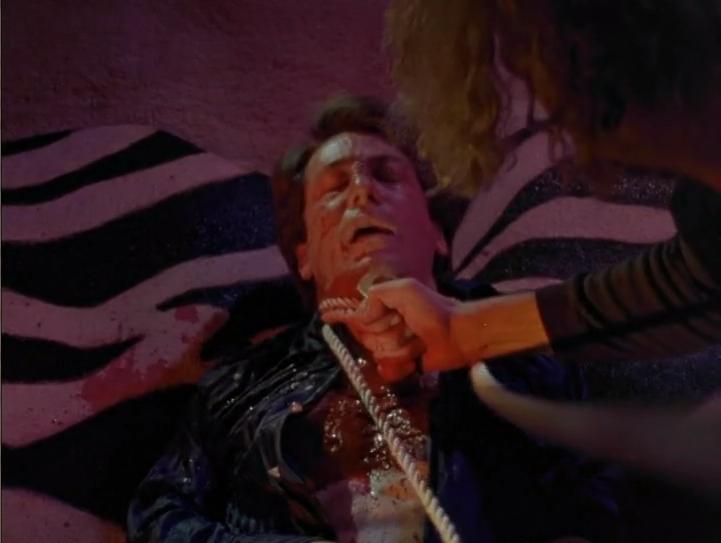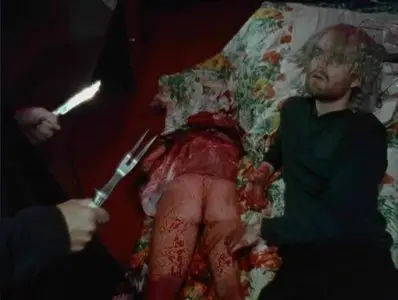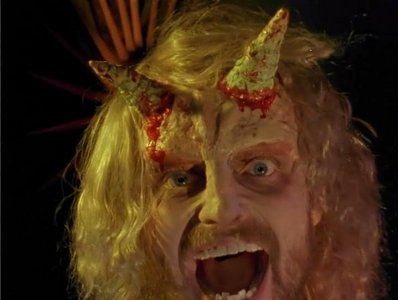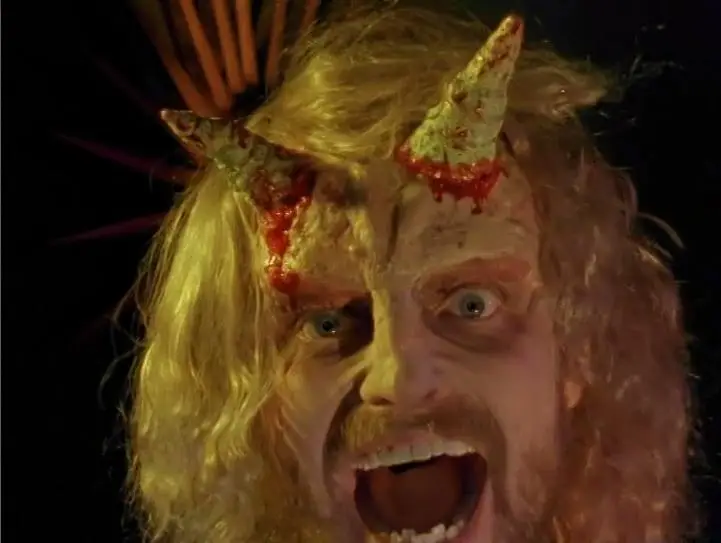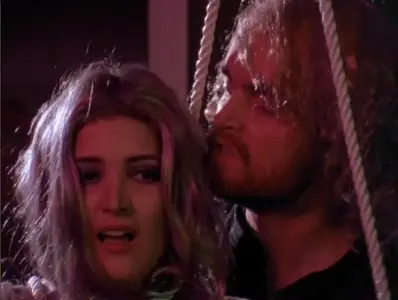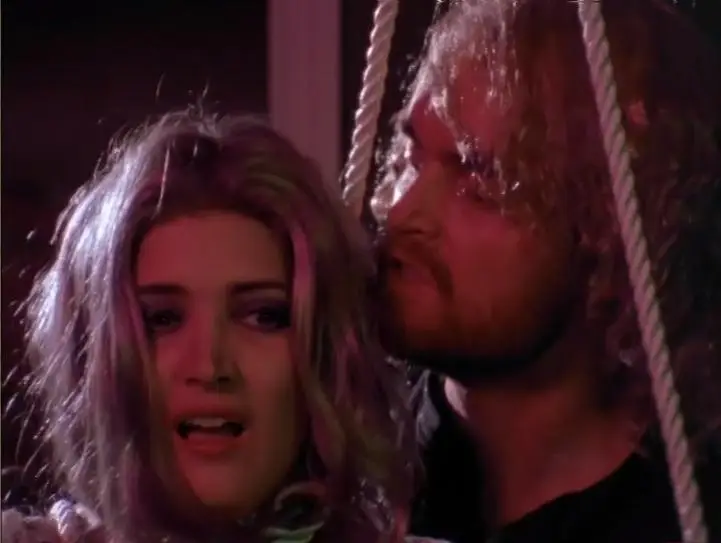The Manson Family (2003)
DVDRip | English | MKV | 720 x 544 | x264 @ 1953 Kbps | AC3 2.0 @ 192 Kbps | 95 mins | 1,34 Gb
Genre: Crime, Horror | 1 win | USA
DVDRip | English | MKV | 720 x 544 | x264 @ 1953 Kbps | AC3 2.0 @ 192 Kbps | 95 mins | 1,34 Gb
Genre: Crime, Horror | 1 win | USA
You've seen the story through the eyes of the law… Now see it through the eyes of The Manson Family…
IMDB
It took renegade auteur Jim Van Bebber over 10 years to complete his sleaze opus, The Manson Family. The project has built up a cult reputation over that time, at least within the underground community. Indeed, with its faded film stock and deliberately scratchy print, it looks like it was left in the grindhouse archive since the summer of love. The unbearably graphic depictions of the Tate and LaBianca murders, which comprise most of the film's final act, may whet the appetite of exploitation fans, but what really sustains interest in Van Bebber's transgressive true-crime flick is his ability to dramatize how the murderers got there. It's an uneasy identification, but one that represents how playfully tripped out life was on Manson's home base of Spahn Ranch. The free-spirited sex n' drugs allure of counter-culture gave his "children" a sense of ideological freedom. And by keeping Charlie (Marcello Games) in the background, mostly representing him as a pint-sized egomaniac who wishes he could be a rock star, Van Bebber focuses on the aspirations and confused motivations of this mad guru's flock.
Van Bebber rubs the viewer's nose in all manner of degradation, from group orgies to performance art bacchanals, and somewhere along the way it stops being fun for the kids (and the spectator). Titillation and drive-in exploitation tactics are readily employed to keep the viewer watching, with a filmmaking approach coasting along in a psychedelic documentary mode. Unlike Oliver Stone's Natural Born Killers, though, Van Bebber never attempts broad satirical potshots (at least until an unnecessary epilogue, which mocks the glib mentality of "Charlie Don't Surf" poseurs). As the kids descend into murder and madness, Van Bebber unflinchingly stays along for the ride. He doesn't arouse sympathy for killers, instead examining how Manson's groupthink distorted left-wing idealism into savage violence.
The viewer may wonder how they're meant to benefit from this would-be freak show, and what catharsis is to be had from wallowing in its graphic gore. Like the best scenes in Wes Craven's Last House on the Left or all of Tobe Hooper's original The Texas Chainsaw Massacre, The Manson Family places horror in our face in a way a glib depiction of human tragedy like Pearl Harbor does not. In Michael Bay's loathsome sanitization of mass death, Kate Beckinsale's war nurse sulks to her boyfriend, "Everything was going so well, and then this happened." It sounds like one of the sick lines of dialogue Van Bebber delivers to Charlie's Family. Or, for another Bay misfire, the remake of Texas Chainsaw Massacre's slick MTV camera glides through a bullet hole in a victim's forehead. Somehow, that seems more offensive than the scene where one of Manson's followers pulls down a dead victim's pants and stabs them repeatedly in the ass. It's all about context: Manson Family recognizes the darkest parts of our selves. You might say it's the part in us susceptible to poisonous thoughts and false ideals.slantmagazine.com
On its face, the idea of combining the true story of the Manson murders with exploitation flick style sounds tacky to the extreme, but writer-director-actor Jim VanBebber has achieved something extraordinary. The gore-for-gore's-sake excesses of exploitation become, in VanBebber's hands, the most emotionally compelling depiction of the Manson murders ever committed to film. The Hinman murder is a horror show of suffering, but it's a mere warm-up to the more famous Tate and LaBianca slayings to come. The full weight of the filmmakers' achievement doesn't settle on the viewer until one watches Sharon Tate watching Jay Sebring mercilessly stabbed to death by Tex Watson. It's not the graphic detail of the murder that gets you, but knowing these events actually happened, and that Tate's witnessing Sebring's death means she must have known what was to come for herself and her unborn child.
The acid trips and free love romps that make up the first two-thirds of the film feel like pure groovy-nudie exploitation, a wonderland of amateur acting and faux '70s film technique, but they're the calm before the storm. When the killings explode onscreen, the picture's power becomes evident. The violence is extended and unrelenting, but meticulously recreated from eye-witness accounts, autopsy reports, and court documents. The slaying of Sebring is followed by the harrowing murder of Abigail Folger, the slitting of her throat and her long, bloody, dazed stagger across the Polansky lawn before collapsing. The LaBianca murders are filled with similarly wrenching detail: Rosemary panics hearing her husband stabbed in the next room, and Van Houten later cackles heartlessly while poking a knife into the dying woman's buttocks. By the end of the film, one feels wrung out and exhausted. The Manson Family is blood-soaked exploitation with the power to raise gooseflesh and maybe even tears.
VanBebber shaped The Manson Family as a repudiation of prosecutor Vincent Bugliosi's best-selling Helter Skelter, a lengthy and detailed explication of the nightmare events in the Hollywood hills that closed out the 1960s, and the high-profile trial that opened the '70s. The film rejects the book's convoluted construction of motive, as well as its sensationalist bent, which has made an icon of loony Manson and a not-so-small fortune for Bugliosi. The lasting importance of the Manson trial/media circus, after all, is that it established an important precedent for all future celebrity trials-of-the-century: the major players cashing in with book and movie deals. Bugliosi's version of events reads like '60s pop culture thrown into the whipsaw blender of Charlie Manson's quick but erratic mind: racial tension, Beatles albums, The Bible, anti-capitalism, hallucinogens, and flower-child free love create a potent cocktail that lulls a group of relatively normal, if disaffected, kids to depraved acts of murder under lifelong convict Manson's mesmeric leadership. It's a riveting tale, but one The Manson Family rejects.
While Bugliosi's book largely accepts the murderers' self-serving claims that they were manipulated into the crimes by Manson's messianic ravings, VanBebber takes all of that with a grain of salt, basing his version instead on the public statements of family member Bobby Beausoleil (where the medical examiner's report conflicts with Beausoleil's account of the Hinman murder, however, VanBebber sticks with the forensic evidence in his recreation). Beausoleil paints a much simpler and logical rationale for the Tate/LaBianca murders: Manson wanted to spring him from jail by fooling the cops into believing they'd arrested the wrong man. Either Beausoleil or Susan Atkins had written "Political Piggy" in Hinman's blood on the wall of his house, so Manson had Tex Watson scrawl "Pig" on the wall of the Polansky house and "Death to Pigs" on the LaBianca's refrigerator. The story isn't nearly as weird and mesmerizing as Bugliosi's tale of hippies run amok, but it makes a lot more sense, and its critique of a multi-million dollar media industry built on murder—particularly the murder of attractive young women—is resonant and relevant to life in a 21st-century America smitten with the OJ Simpson and Mark Peterson trials.
On a technical level, The Manson Family is a wonder of editing. The production was a scattershot affair spread over fifteen years as VanBebber slowly raised the money to complete it. Principle photography took place in fits and starts from 1988 to 1993, and left VanBebber and editor Michael Capone (No Joking) with an abundance of mismatched footage. Their final cut of the film is an essentially linear narrative built from perfect recreations of trippy, late '60s exploitation flick style à la Roger Corman's The Trip; faux interview footage of the various family members in prison years after the crimes; the aforementioned horrifying murder footage; and the narrative framing device of Jack Wilson and his encounter with Manson's gothic, modern-day worshipers. The visual aesthetics of each of these building blocks is spot-on, and the two men weave them together in an almost documentary style, the interview footage providing context, while the rest assaults the viewer viscerally and emotionally.
The exploitation footage comprised of the drug taking and naked romping that makes up the greater part of the first two-thirds of the picture is loaded with erratic zooms, low-angle shots of the flower-power family traipsing through grassy fields, lens flares caused by the sun, and psychedelic scene transitions right out of Dennis Hopper's Easy Rider. The footage culminates in a red-filtered blood orgy featuring imagery of dog sacrifice and a crown-of-thorns-sporting Charlie tied to a cross—just the sort of hyper-obvious, over-the-top visual symbolism one finds in those old pictures of the Corman school of filmmaking. It would be bad, bad filmmaking except it's abundantly clear that VanBebber's use of visuals is directed at evoking a time and place, not saying something heavy or arty. His technique is so studied it completely sells an Ohio field as the infamous Spahn ranch.
The interview footage is equally convincing. Shot on a variety of sources from video to film, VanBebber and Capone carefully damaged and color-timed the scenes to make them appear aged. The footage appears culled from a variety of decades, catching the fevered, fiery rhetoric of Watson, Krenwinkel, Atkins, and other family members during Manson's trial, as well as their more reflective and subdued demeanor years later.
Download:
http://www.filesonic.com/file/...anson.Family.2003.AH.part1.rar
http://www.filesonic.com/file/...anson.Family.2003.AH.part2.rar
http://www.filesonic.com/file/...anson.Family.2003.AH.part3.rar
http://www.filesonic.com/file/...anson.Family.2003.AH.part4.rar
http://bitshare.com/files/wyp4....Family.2003.AH.part1.rar.html
http://bitshare.com/files/7ao0....Family.2003.AH.part2.rar.html
http://bitshare.com/files/zgqt....Family.2003.AH.part3.rar.html
http://bitshare.com/files/gw51....Family.2003.AH.part4.rar.html
http://hotfile.com/dl/96619508....Family.2003.AH.part1.rar.html
http://hotfile.com/dl/96619685....Family.2003.AH.part2.rar.html
http://hotfile.com/dl/96619751....Family.2003.AH.part3.rar.html
http://hotfile.com/dl/96619782....Family.2003.AH.part4.rar.html
http://www.fileserve.com/file/...anson.Family.2003.AH.part1.rar
http://www.fileserve.com/file/...anson.Family.2003.AH.part2.rar
http://www.fileserve.com/file/...anson.Family.2003.AH.part3.rar
http://www.fileserve.com/file/...anson.Family.2003.AH.part4.rar
Interchangable links.
No More Mirrors.


